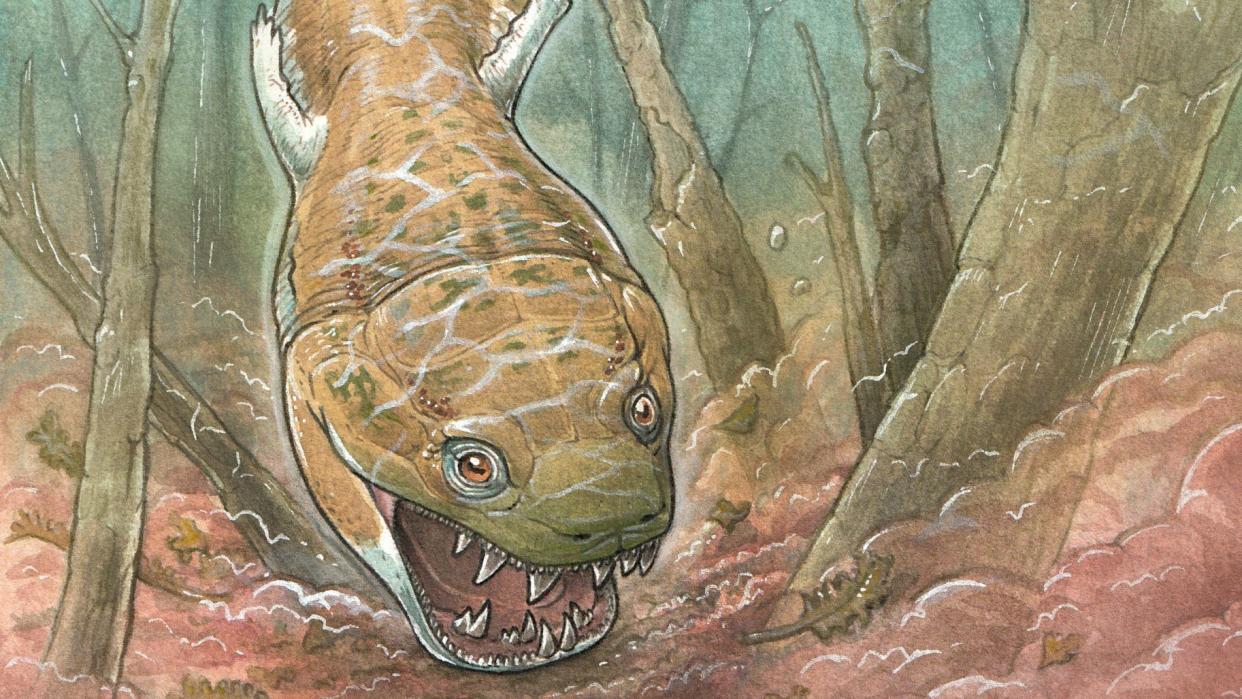Giant swamp creature with ‘huge fangs’ top predator before dinosaurs – study

A giant salamander-like creature was a top predator in the ice age before dinosaurs, a new study suggests.
The fanged creature had a skull more than two feet-long, and lived in swampy waters 40 million years before dinosaurs first evolved.
Called Gaiasia jennyae, the swamp creature with a toilet seat-shaped head, had interlocking jaws which it would use to clamp down on prey as it swam past.
Jason Pardo, a National Science Foundation postdoctoral fellow at the Field Museum in Chicago, in the US, and the co-lead author of the study, said: “Gaiasia jennyae was considerably larger than a person, and it probably hung out near the bottom of swamps and lakes.
“It’s got a big, flat, toilet seat-shaped head, which allows it to open its mouth and suck in prey.
“It has these huge fangs, the whole front of the mouth is just giant teeth.
“It’s a big predator, but potentially also a relatively slow ambush predator.”
The fossil is named after the Gai-as Formation in Namibia where it was found, and for Jenny Clack, a palaeontologist who specialised in the evolution of early tetrapods – the four-limbed vertebrates that evolved from lobe-finned fishes and gave rise to amphibians, reptiles, birds, and mammals.
Study co-lead author, Claudia Marsicano of the University of Buenos Aires, Argentina, and her colleagues found the fossil.
She said the discovery was “shocking”, adding: “I knew just from seeing it that it was something completely different.
“We were all very excited.
“After examining the skull, the structure of the front of the skull caught my attention.
“It was the only clearly visible part at that time, and it showed very unusually interlocking large fangs, creating a unique bite for early tetrapods.”
The researchers unearthed several specimens, including one with a well-preserved, articulated skull and spine.
Today, Namibia is just north of South Africa, but it was further south 300 million years ago (when Earth was nearing the end of an ice age) – almost even with the northernmost point of Antarctica today.
Dr Pardo said: “It’s really, really surprising that Gaiasia is so archaic.
“It was related to organisms that went extinct probably 40 million years prior.”
He added: “The fact that we found Gaiasia in the far south tells us that there was a flourishing ecosystem that could support these very large predators.
“The more we look, we might find more answers about these major animal groups that we care about, like the ancestors of mammals and modern reptiles.”
The findings are published in the Nature journal.


